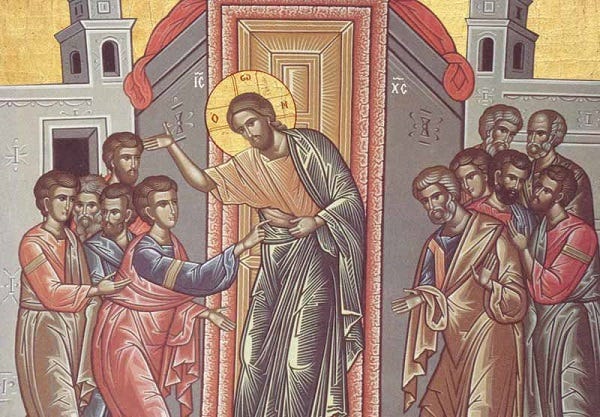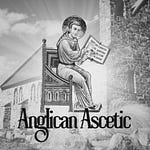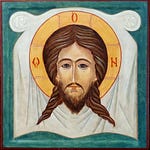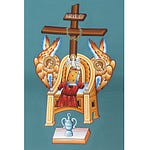We have here in the north and south walls of the nave of our church the Stations of the Cross. There are fourteen stations, and through each one we follow our Lord Jesus in His Passion. We accompany Him through the sacramental action of the Liturgy. We participate in the experience of the inward and spiritual grace of Our Lord’s Passion: His holy walk of sacrifice, all the way to the Cross, through His death on the Cross, and His being laid in the Tomb.
Our Liturgy in Holy Week and Easter proceed in the same way. We proceed by Stations. We started at the death of Lazarus and his resurrection. We continued to the Station of our Lord’s entrance into Jerusalem upon the back of a donkey. Then to Maundy Thursday and our Lord’s institution of the Sacraments of the Eucharist and Holy Orders. The next station was the Garden of Gethsemane in watching with Our Lord at the Altar of Repose. Then on Good Friday, we were with our Lord as He was on the Cross, His dying on the Cross – these were during the Three Hours service. Then to His entombment, in our Tenebrae service. Finally to the Station of His resurrection through the Easter Vigil, which represents the finding of the tomb empty by the Holy Myrrh-bearing Women still in the dark of night, and this carries forth into Easter Day and the wider celebration of His resurrection by the apostles and disciples. Through it all, we were truly with Jesus and with His disciples, by means of the New Testament accounts, the Scriptural accounts, and the Liturgy.
Today we continue to the next Station. That next Station is our Lord meeting the disciples in the Upper Room. He came to them on the evening of that day, the first day of the week, the doors being locked where the disciples were for fear of the Jews. And so let us put ourselves into the story, which is what the Liturgy always invites us to do. We are in the Upper Room. We share the fear of what the chief priests might do next. We are confused, we are disoriented, we are uncertain what to do next.
Jesus enters. He came and stood among them and said to them, “Peace be with you.” Our Lord’s first words to them after His mighty resurrection were “Peace be with you.” This was the exchange of peace. He bestowed upon the Church His peace. This peace of heaven; this peace which passes all understanding; this peace spoken by Christ in His resurrection and glorious Body, a Body in which His hands and His side bore the wounds of His Crucifixion. And He said “Peace be with you” a second time. And He said, “As the Father has sent me, even so am I sending you.” To be sent is to become an apostle. The Greek word for apostles is ἀπόστολος, and it means a messenger, one sent forth. This moment, this Station, is beholding Our Lord and Savior commissioning the Apostles.
Thus it is fitting for Jesus, in commissioning the Apostles, breathes on them and says to them, “Receive the Holy Spirit.” They are to be bearers of the Holy Spirit. They are made full of the Holy Spirit so that they can proclaim the Gospel to the world: to the Jews and to the Gentiles. They are made full of the Holy Spirit as Blessed Mary the Virgin Mother was full of the Holy Spirit, as Saint Elizabeth and Saint John the Baptist were full of the Holy Spirit, as Simeon and Anna were full of the Holy Spirit. They were truly born of God, and sharers in Christ’s victory over death and the Devil. The Apostles were to proclaim the Gospel: of the forgiveness of sins, and the Gospel about eternal life in Jesus Christ, the Son of God.
It was because they were full of the power of the Holy Spirit that Saint Peter’s preaching on Pentecost, which our first reading picks up just after Peter finished, was able to draw three thousand souls to be baptized on the day of Pentecost. The power of the Holy Spirit is to draw people to Christ, to life in Christ. And the power of the Holy Spirit drew the three thousand not only to Baptism but to life in Christ’s Body the Church: hence, the three thousand joined in with the prayer life of 120 Upper Room disciples. Saint Luke captures this when he writes, “They devoted themselves to the apostles’ teaching and fellowship, to the breaking of bread, and to the prayers.” To those three aspects of prayer: to life in community sharing the revelation proclaimed by the Apostles, to the Eucharist, and to the daily liturgy (“the Prayers”). By this threefold pattern, called the threefold regula, we participate in the peace Christ bestowed on His Church, this peace that keeps our heart and mind in the knowledge and love of God, of His Son Jesus Christ; by this pattern, this regula, the Holy Spirit is kept among us, that He, with the Father and Son, always remains with us.
This is life in Christ, this threefold pattern of prayer: kife in Him Who died for our sins, and rose again for our justification. By this life in Christ, we put away the leaven of malice and wickedness, and serve Christ in pureness of living and truth. Thanks be to God for the witness of the Apostles, their courage, their fortitude, and their generosity in showing us what life of prayer in Christ looks like, that we can truly be in Christ, and He in us: He who lives and reigns with the Father in the unity of the Holy Ghost, ever one God, world without end. Amen.











Share this post